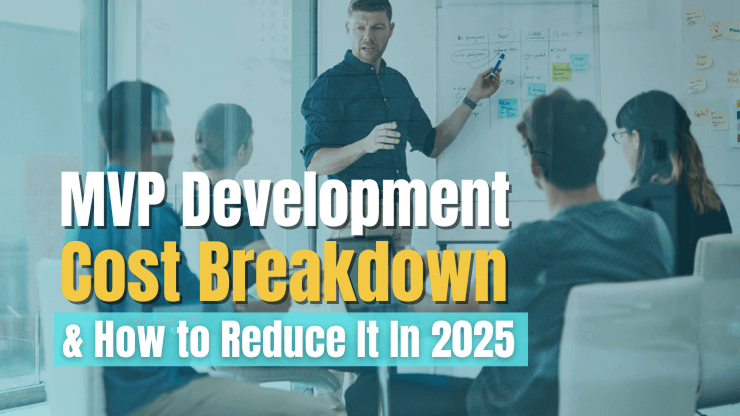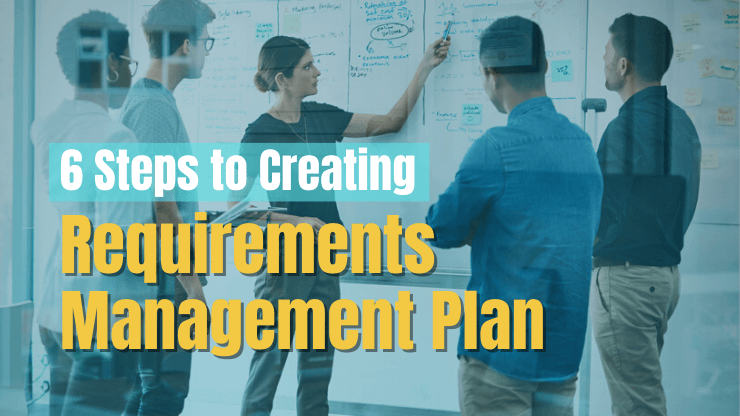A recent global, cross-industry survey showed that 26% of companies had AI projects in production. With nearly a third of those companies spending over 21% of their IT budget on AI, it's clear that AI adoption is on the rise, and businesses are preparing to take full advantage of its potential.
In this article, we'll discuss how to use OpenAI's GPT-3 API in your SaaS product. We'll cover the risks associated with AI implementation, the potential benefits, and the steps you can take to ensure success. So let's get started and explore the possibilities of AI!
What is GPT-3?
GPT-3 is short for generative pre-trained transformer 3 and is an unsupervised language model that uses deep learning to produce human-like text. It was created by OpenAI, an American artificial intelligence (AI) research lab with both nonprofit and for-profit wings.
Launched in 2020, GPT-3 is the largest language model ever created, containing over 175 billion parameters. In other words - it makes use of a massive amount of training data to respond to user input in a natural, human-like way. This training data is comprised of text data from sources like books, websites, and even social media.
You can interact with GPT-3 via OpenAI’s web interface (ChatGPT, Playground) or via API:
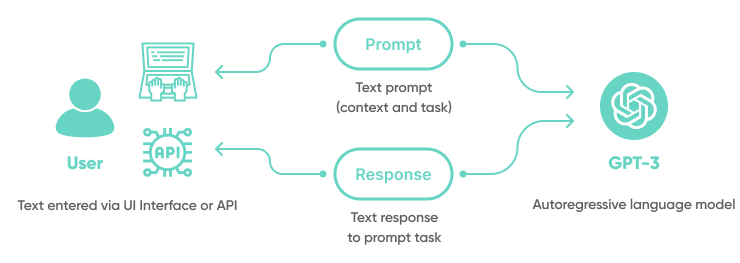
Either way, you provide a text prompt and GPT-3 responds with an answer. Generally, you can think about these text prompts as either questions like:
- What is the difference between product management and project management?
- Who was the 32nd US president?
- Which of the above Google Ads will perform better?
Or requests like:
- Summarize the above text into a single paragraph.
- Translate the following text from English into Spanish.
- Write product descriptions for the iPhone 13 and Samsung Galaxy S23.
You’ll notice that some of these inputs have a distinct “right” answer (there’s only one 32nd US president, for example), but most of them are somewhat subjective or could be answered a number of ways. Because of this, you can ask GPT-3 to generate a response multiple times and each time you may get a slightly (or very) different response, just like you would if you asked real humans.
It’s also important to note that your text prompts do not need to be as simple as the above examples. We’ll look at more complex input examples later in this article.
What is the OpenAI API?
We mentioned above that using the OpenAI API is one of the two ways to interact with GPT-3. So, let’s now talk more specifically about what this API is and how you can use it.
If you’re familiar with APIs, you’ll know that an API stands for application programming interface. Essentially, it acts as a means for two computer programs or systems to interact with each other. The OpenAI API is no different. It provides access to GPT-3, along with other AI models that are created by OpenAI.
If you’re just getting started with OpenAI, you’ll probably want to start by using the OpenAI playground, which is a web app with a text input box and a few controls on the side.
Once you’re ready to integrate GPT-3 into a SaaS application or business process, you’ll want to use the API. Here is example for Python:
import os
import openai
openai.api_key = os.getenv("OPENAI_API_KEY")
response = openai.Completion.create(
model="code-davinci-002",
prompt="write how to use openai api in python",
temperature=0,
max_tokens=64,
top_p=1.0,
frequency_penalty=0.0,
presence_penalty=0.0
)In most cases, using the OpenAI API is the same as using the OpenAI Playground - you basically send text instructions and get text results. Both the API and the playground also allow users to tweak various parameters such as temperature and top_p to adjust the results.
Benefits of GPT-3 OpenAI API
You’re probably already starting to see the potential value of using GPT-3. If leveraged appropriately it has the potential to provide immense value to SaaS businesses. On a basic level, OpenAI can alleviate the burden of mundane, time-consuming tasks. But, with the right human controlling it or writing the API inputs, it also has the potential to speed up more complex tasks such as summarizing technical reports or drawing conclusions from robust data sets.
There’s no doubt that this new generation of technology has the potential to transform how many companies do business, but even today many businesses are already seeing the benefits of this emerging technology by:
- Automating tedious and time-consuming tasks such as summarization, translation, and data analysis.
- Automating customer support and customer success tasks.
- Speeding up content creation by generating content using the deep-learning language model.
- Generating ideas using data from a wide variety of sources.
Limitations of GPT-3 OpenAI API
While GPT-3 has quite a compelling value proposition, it certainly has its limitations as well. Critics of the technology have cited not only its technical limitations but also its risks for businesses. Let’s take a look at a few limitations your business should be aware of:
- Limited language availability: The GPT-3 OpenAI API is currently only available in a limited number of languages, such as English, French, Spanish, and Chinese.
- Limited applications: The GPT-3 OpenAI API is only suitable for specific applications, such as natural language processing and question-answering tasks and is not suitable for more tasks such as image recognition or machine translation.
- Inconsistent responses: OpenAI GPT-3 can sometimes provide inconsistent responses. This is due to the fact that GPT-3's responses are generated based on a probabilistic model and may not necessarily reflect the true intent of the prompt. For this reason, it’s best used for generating text in a human-like way rather than as a means of delivering hard facts.
- Offensive or biased responses: As with all language models, GPT-3 is a product of the input data. Due to the nature of the input data (including sources such as Reddit and Twitter), at times it has been shown to produce biased or even extremely offensive responses. This should be carefully considered when choosing to use this technology.
It’s worth noting that this is not intended to be a comprehensive list of limitations or risks associated with OpenAI or other machine learning models, but rather a guide to some of the key limitations that may affect SaaS businesses intending on leveraging the technology.
7 Proven ways SaaS startups can leverage GPT3 OpenAI API
So far we’ve looked at some basic functionality of GPT-3. We’ve provided very basic prompts and received simple responses, but the API can be used for a lot more than that! In this section, we’ll give you some ideas of how GPT3 AI SaaS OpenAI API can be used by SaaS startups:
Create marketing content

With GPT-3, SaaS startups can quickly generate marketing copy such as blog posts, web copy, emails, product descriptions and more. This can drastically reduce the time spent manually drafting, reviewing, and editing this type of content. A few of the best ways to leverage this technology for marketing projects include:
- Email generation: You can use GPT-3 to draft marketing emails that are personalized for each individual based on their situation, such as providing a discount code or offering a special promotion.
- AI copywriting: GPT-3 OpenAI can be used to generate content for copywriting tasks such as landing pages, blog posts, ads, and twitter threads. To do this, you would need to provide GPT-3 OpenAI with some examples of the type of content you want generated and perhaps some contextual information about your product, sales process, or marketing messaging.
- Text completion: OpenAI's text completion functionality can be utilized by SaaS marketing teams to reduce the amount of manual text writing and editing needed to create personalized customer experiences. It can also help craft more relevant and accurate customer-facing content, such as sales emails and product descriptions, faster and more cost-effectively.
PRO TIP: To generate email copy, you will need to feed OpenAI with previous example messages (i.e. training data) as well as hints as to what style the answer should be written in. You can prototype this using the Playground:
[Prospect] Bram Adams Founder at Stenography [Email Template] Hi [Prospect Name], Your LinkedIn description inspired me to reach out. Other staffing firms like Yellow.ai, Boost.ai and Visor.ai leverage OpenAI to write better sales messages in scale! I'd be happy to share a few ideas about how [Prospect Company Name] could accomplish the same. If you're open to it, when would be a convenient time to chat? write email based on above [Prospect] data and [Email Template]
Subject: Leveraging OpenAI for Better Sales Messages Dear Bram Adams, I came across your profile on LinkedIn and was immediately inspired by your description. Many staffing firms, such as Yellow.ai, Boost.ai, and Visor.ai, have been leveraging OpenAI to write better sales messages and scale their results. I wanted to reach out to see if you would be interested in hearing a few ideas about how Stenography could use OpenAI to accomplish the same. If you are open to it, when would be a good time for us to chat? I look forward to hearing from you. Best, [Your Name]
Automate customer service
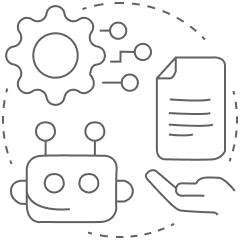
GPT-3 can be used to automate customer service and help to reduce the time spent by employees on repetitive, mundane tasks, such as answering simple email inquiries or providing a tracking number for customer orders. Let’s look at a few specific ways that GPT-3 can be used to automate and improve the quality of your customer service:
- Customer service chatbots: You can use the GPT-3 API to integrate the machine learning technology into a custom chatbot solution, or simply bring your open API key to an existing chatbot app to start leveraging this technology. Either way, GPT-3 can answer customer questions and even streamline the sales process by providing product or service recommendations via one-on-one chats with customers.
- Customer service emails: GPT-3 Open AI can be used to automate customer service by identifying customer issues within the body of an email and providing tailored solutions in a reply.
- In-app or on-web product suggestions: The technology can be used to suggest relevant products and services to customers and help them find the right solution for their needs - all based on the user’s context such as their digital footprint on your website or even past purchases.
PRO TIP: While the GPT-3 API can help to power complex custom apps that automate customer service at scale, we recommend you start off by testing OpenAI’s functionality using simple prompts and some basic training data. If it is working well for your use case, consider developing infrastructure to optimize its effectiveness. Here’s an example of a simple test you could run:
[Customer Message] Hi! I just sent out the first few emails using a template but the text looks purple. It didn't look like that in the preview. How do I avoid this? Best, Bram [Product Description] Text is HTML and can be controlled using HTML tags properties like font size and color write an answer to [Customer Message] based on our [Product Description]
Hi Bram,
Thanks for your message. It looks like you're experiencing an issue with the color of the text in your email template. Since text in HTML emails is controlled using HTML tags, you'll need to make sure that the font size and color are set correctly. You can do this by checking the HTML code in the template. If you need any help with this, please feel free to get in touch.
Best, [Your Name]
Analyze data at scale
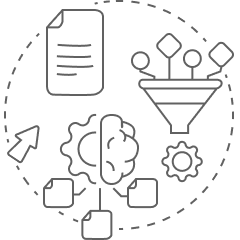
Data analysis, when done manually, is time consuming and often requires expertise across various business domains. In other words, it can be expensive! GPT-3 is a good tool for SaaS startup companies who may not have access to these resources but would like to focus more attention on data for business decision making and operational efficiency. A few key uses include:
- Parsing unstructured data: GPT-3 Open AI can be used to automatically parse unstructured data from any source, including webpages, emails, documents, and social media. The AI mode can identify relevant entities and concepts in the data, use natural language processing techniques to extract insights, and generate summaries and reports.
- Review and summarize data: GPT-3 can be used to rapidly analyze and summarize data such as BI data, survey data, market research data on potential customers, competitive data, and sales and marketing data. It, for example, can quickly identify trends, identify customer segments, detect customer preferences, and suggest - in plain English - strategies and tactics for improving the customer experience.
- Parsing text into tables: GPT-3 OpenAI can be used to parse text into tables by using the model to read and understand the text, generate a table structure based on the information presented, and then generate a corresponding table. The model can also be used to generate additional data points or fill in missing information to create a complete table.
PRO TIP: While GPT-3 will use machine learning to make a best guess as to the most appropriate way to format data that it parses, it may require fine tuning. Try providing specific formatting instructing to fine tune your results like:
[Prospect] Bram Adams 2nd degree connection2nd Founder at Stenography [Experience] Founder at Stenography - Stenography · Full-time - Mar 2021 - Present · 1 yr 11 mos - Greater New York City Area Developer Ambassador at OpenAI - Oct 2020 - Present · 2 yrs 4 mos Education Engineer at Algolia - Feb 2019 - Jun 2019 · 5 mos - Greater New York City Area Software Engineer at HBO - Jun 2016 - Sep 2018 · 2 yrs 4 mos - Greater New York City Area A Software Engineer on the MSE team. Create a 4-column table with the city name, first date, last date, and job title for each line of text below. Treat each line as a row. If there is no city name leave the column blank. Use this format: city name | first date | last date | job title
| Greater New York City Area | Mar 2021 | Present | Founder at Stenography |
| | Oct 2020 | Present | Developer Ambassador at OpenAI |
| Greater New York City Area | Feb 2019 | Jun 2019 | Education Engineer at Algolia |
| Greater New York City Area | Jun 2016 | Sep 2018 | Software Engineer at HBO |
Generate startup ideas
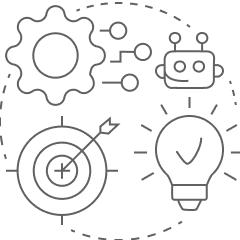
With GPT-3 Open AI, users can simply ask a question and the model will generate a range of ideas and concepts based on the given question. This can be used to help SaaS founders and other product leaders generate new business ideas, explore ideas for future growth, and build on existing ideas.
- Generate new ideas: For example, a user could ask, "What are some ideas for a SaaS business?" GPT-3 Open AI will generate a range of ideas and concepts, such as a software as a service platform for social media, a platform for online tutoring, or a platform for online streaming.
- Propose creative business ideas: GPT-3 can be used to find new ways of looking at existing business models. Maybe you want to explore new ways of optimizing your sales process or you want to start thinking outside of the box to appeal to a new customer segment. Either way, you could ask GPT-3 a series of specific questions to propose creative solutions and improve long-term business performance.
- Refine existing ideas and concepts: For example, a user could input the concept of a SaaS platform for online tutoring and GPT-3 Open AI will generate ideas and concepts for the platform, such as creating individualized learning plans for students or creating a marketplace for tutors.
PRO TIP: Start by asking a broad question, then fine tune the results by providing more details about your industry or by providing training data that helps GPT-3 understand what kinds of business ideas are viable and what aren’t. For example, you could start with something like:
write 5 business ideas how OpenAI can be used by a SaaS marketing team
- Utilizing OpenAI to create chatbots for customer service, enabling customers to quickly and easily receive answers to their questions.
- Leveraging OpenAI to generate personalized content to help customers with their buying decisions.
- Using OpenAI to automate A/B testing of different marketing strategies and tactics, allowing marketers to quickly identify the most effective strategies.
- Applying OpenAI to analyze customer data and provide insights into customer behavior and preferences.
- Implementing OpenAI to automate the segmentation of customer data, allowing marketers to target the right customers with the right message.
Conduct semantic search

Semantic search is search with meaning. In other words, a search engine that can, instead of simply trying to match query words literally, look for the underlying meaning of the query. While search engines today like Google do have a level of semantic search functionality, GPT-3 takes this functionality to another level entirely.
GPT-3 uses natural language processing to make sense of the relationship between words and concepts, allowing it to provide more relevant and appropriate answers to questions. Semantic search can be used for tasks such as:
- Curating unstructured archived BI data without the need for time-consuming content management solutions.
- Monitoring news sources to keep tabs on the public opinion of your brand or competitive product releases.
- Searching and analyzing audio and visual data sources, such as podcasts and videos without any manual work.
- Analyzing medical or otherwise technical questions that would normally be difficult to do with Google searching.
PRO TIP: Look for business processes that require reviewing, analyzing, or otherwise digesting large amounts of content. Try using GPT-3 to replace this work. For example, we can use it answer basic questions about a patient’s medical history:
[History of Present Illness] Patient is a 48 year-old well-nourished Hispanic male. For the past three months, the patient has been experiencing worsening symptoms. He has been experiencing progressively worsening headaches accompanied with lightheadedness, light and sound sensitivity, nausea, and vomiting. He reports no loss of consciousness associated with the headaches. No convulsion, change of vision, or loss of continence. When the headaches began 2 months ago, they would last about half of a day and occur approximately once per week. In the last month, the patient has been experiencing night sweats, chills, and subjective fevers almost every night. This has impacted his sleep significantly, and he has not been able to sleep more than 4 consecutive hours in over one month. When did headaches begin?
2 months ago
Translate content

GPT-3 utilizes a powerful neural network to provide natural-sounding, accurate translations of text content. With GPT-3, users can quickly and easily translate content from one language to another with a few simple steps.
First, the user enters the content to be translated into the interface or via the API. Second, the user selects the desired target language. Third, the GPT-3 Open AI engine automatically generates the translation in a fraction of a second. A SaaS company can use this translation capability to translate content such as:
- Contracts with foreign subcontractors
- Webpages and marketing messaging
- Articles, blog posts and eBooks
- Press releases for global distribution
- Customer inquiries from other countries
PRO TIP: It’s always best to have a native language editor who can correct mistakes, but GPT-3 can drastically speed up the process of content translation and help save your business money in the long run. As an example, we could have OpenAI translate part of a contract:
5.3. The Party requesting unilateral termination of this Agreement before the end of the contractually stipulated/renewed period must, mandatorily, send written notice to the Party ninety (90) days in advance, in case of contracts signed with ON DEMAND OPTION fifteen (15) days in advance.
translate text to Latin
Partes petendi terminationem unilateralem huius Conventionis ante finem periodi contractus / renovati debent necessario mittere notice scriptam alteri Parti nonaginta (90) diebus ante, in casu contractuum signatorum cum OPTIONE IN INSTANTI quindecim (15) diebus ante.
Speed up software development

Open AI can be used to speed up any development you’re working on in-house. It can utilize natural language processing to understand code-related queries and generate code accordingly. With GPT-3, developers can tackle tasks such as:
- Generating code for specific tasks: GPT-3 Open AI works quite well when prompted to provide code for a specific function or task. It can understand code-related queries and generate code to meet developer specifications.
- Debug code: GPT-3 Open AI can also be used to debug code, helping developers to identify and fix errors in their code. It can detect errors in code and suggest solutions, making it easier for developers to find and fix bugs.
- Build no-code applications: GPT-3 can be used to generate code for no-code applications, enabling developers to rapidly develop complex applications without having to write any code.
- Generate SQL queries: OpenAI can be used to generate SQL queries from human text. Once it has identified the keywords from the input, it can construct a SQL query using them. For example, if the user typed in "show me all the customers who have made purchases in the last month", OpenAI would analyze the text and identify the keywords "customers", "purchase", and "last month", and then generate a SQL query like "SELECT * FROM customers WHERE purchased_on > DATEADD(MONTH,-1,GETDATE())".
PRO TIP: OpenAI offers a variety of pre-trained models that can be used to quickly integrate AI into existing applications. This eliminates the need to train models from scratch and can dramatically reduce development time.
write Python code to call Open AI prompt "write Python code to call Open AI prompt"
import openai
openai.api_key = "YOUR_API_KEY"
prompt = "Write Python code to call Open AI prompt"
response = openai.Completion.create( engine="davinci", prompt=prompt, max_tokens=50 ) print(response["choices"][0]["text"])
Conclusion
GPT-3 OpenAI API is quickly becoming the go-to AI technology for many SaaS startups. It offers a wide range of benefits, from streamlining everyday tasks to enabling the development of full-fledged AI-powered applications at very low cost. While the technology is still early, those willing to invest the time and resources will gain a competitive edge.
If you're looking for help developing an AI application for your SaaS product, consider our AI development services. Our team can help you put together a comprehensive AI strategy and guide you through the development process. With our SaaS application development company, you can leverage the power of GPT-3 OpenAI API to build a market-ready product that stands out from the competition.


